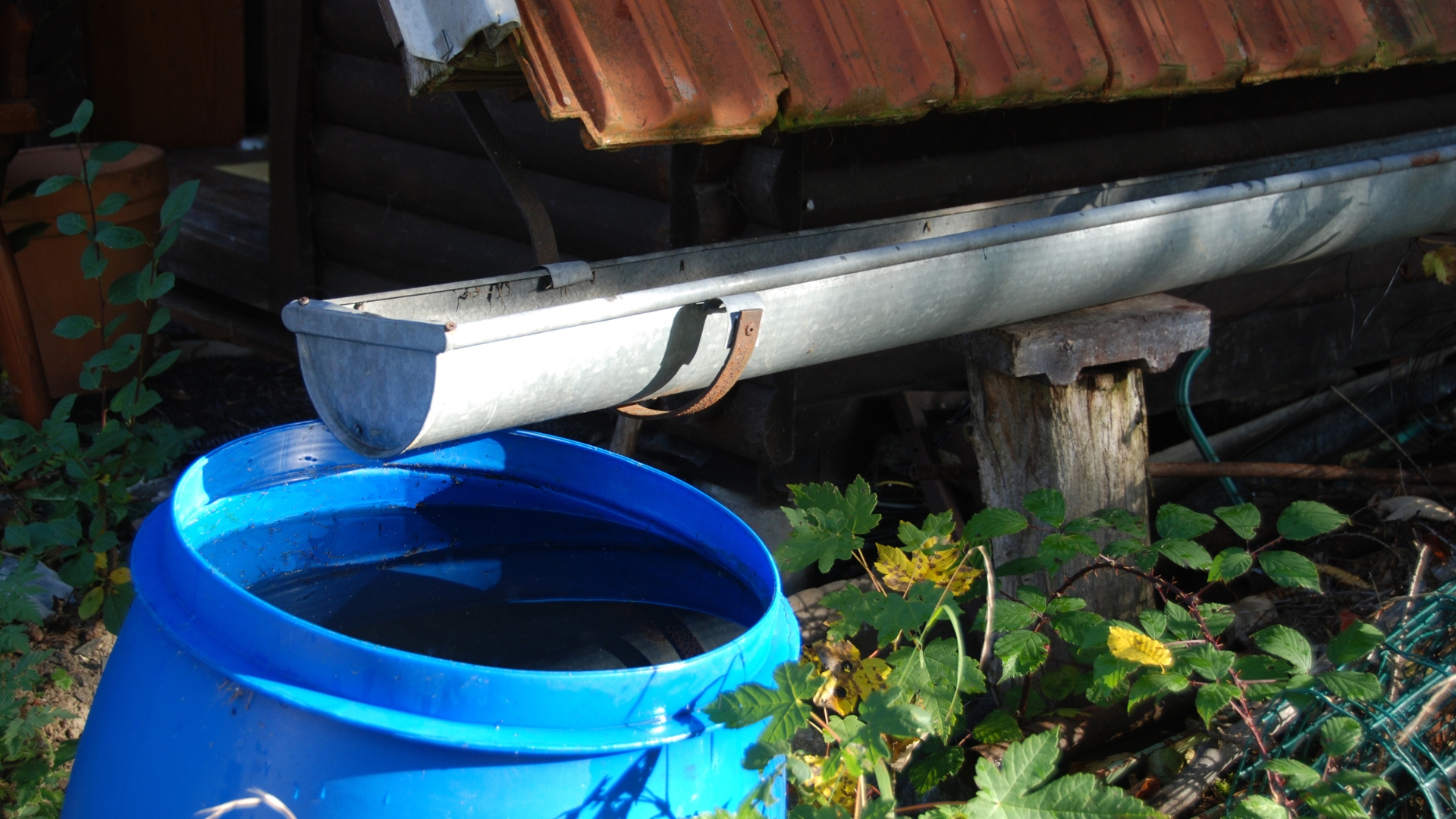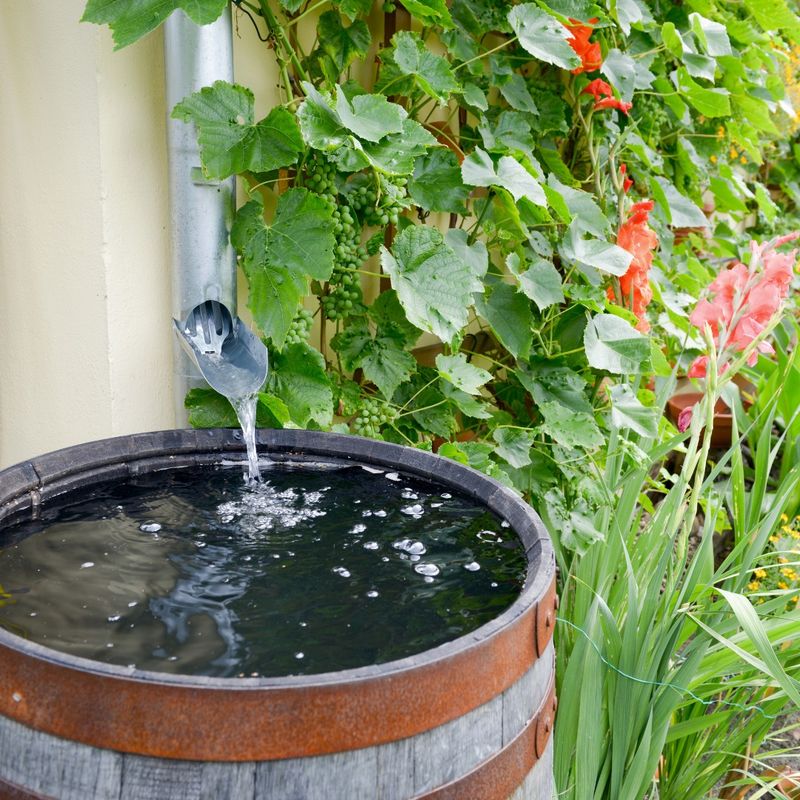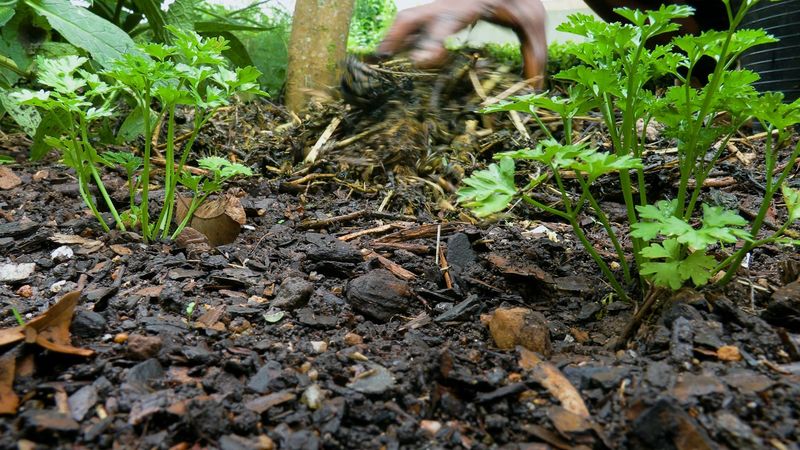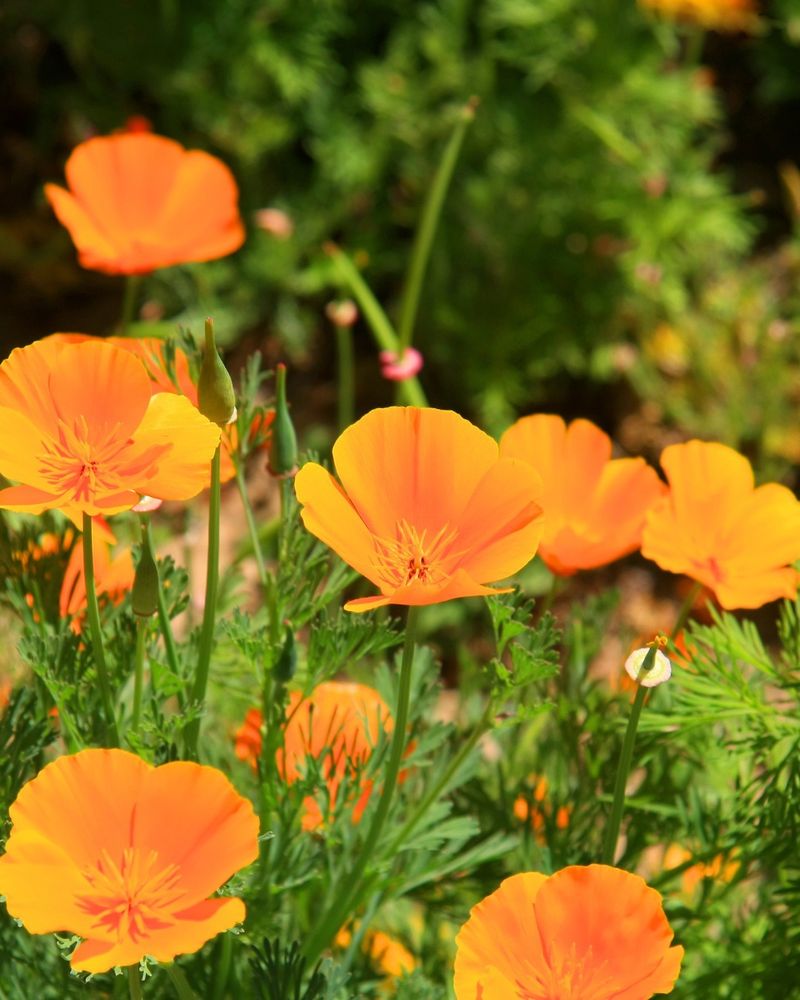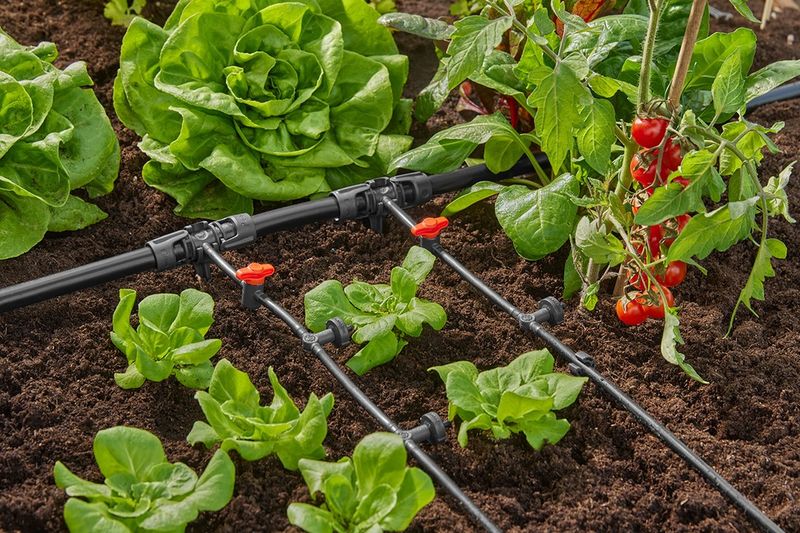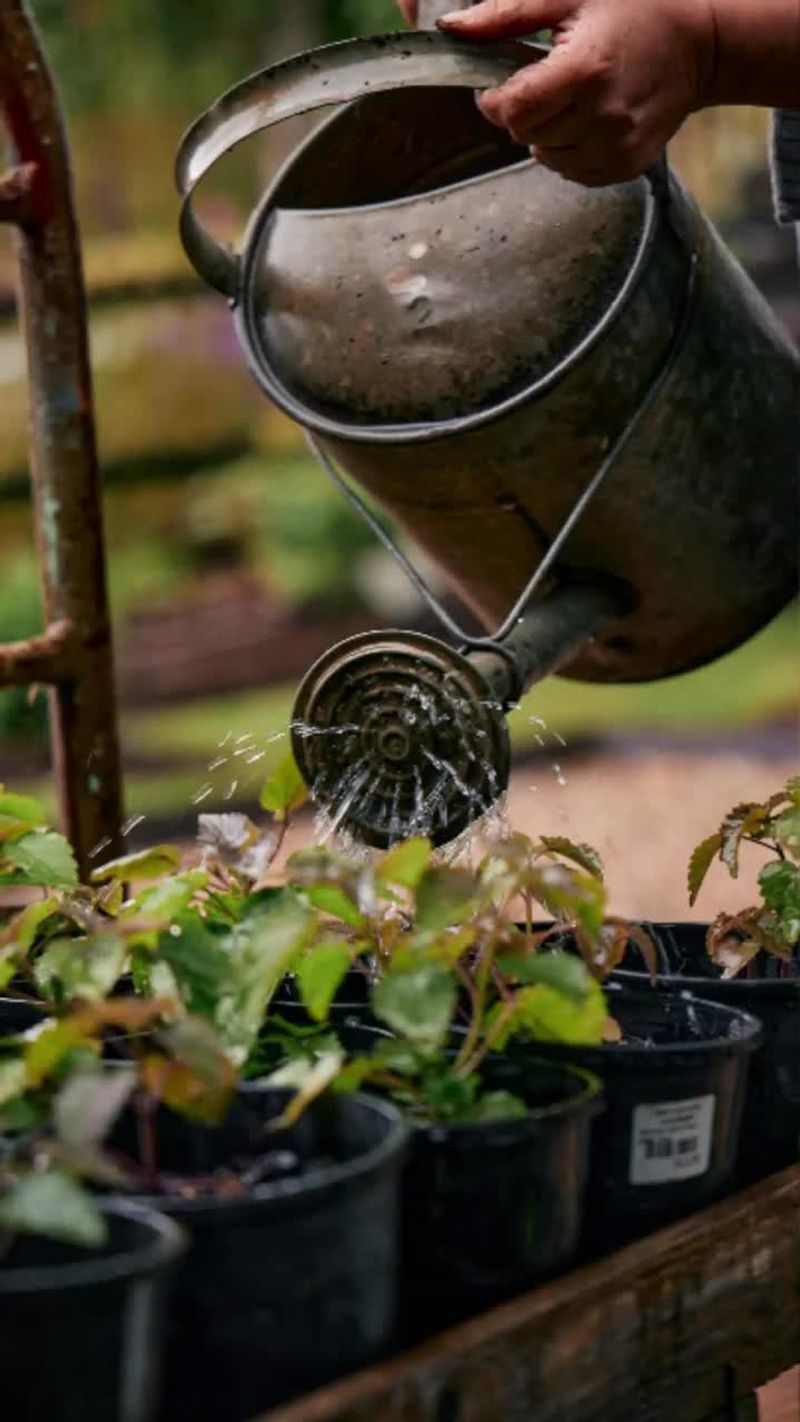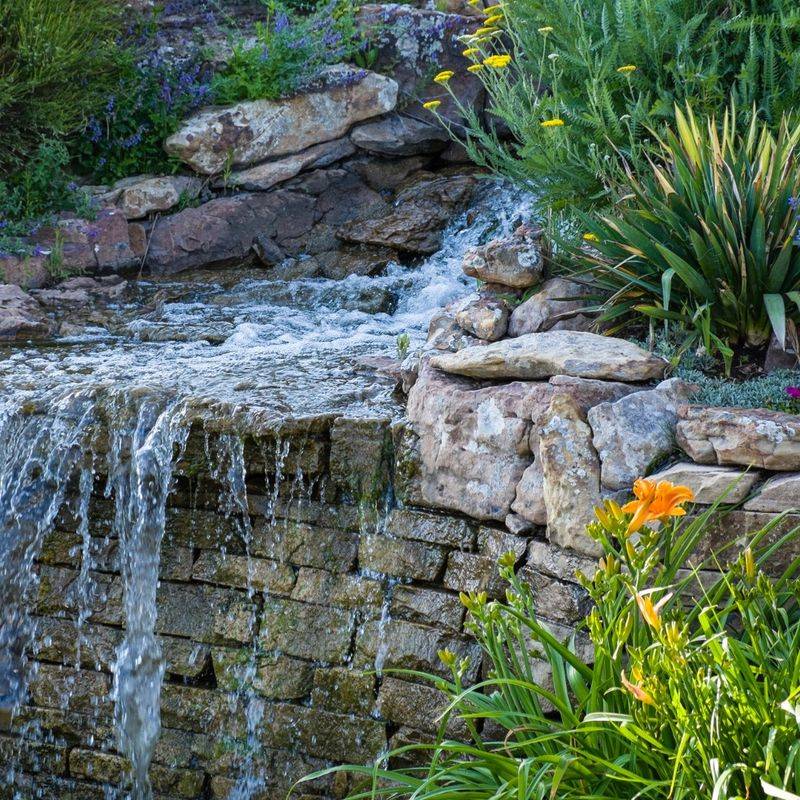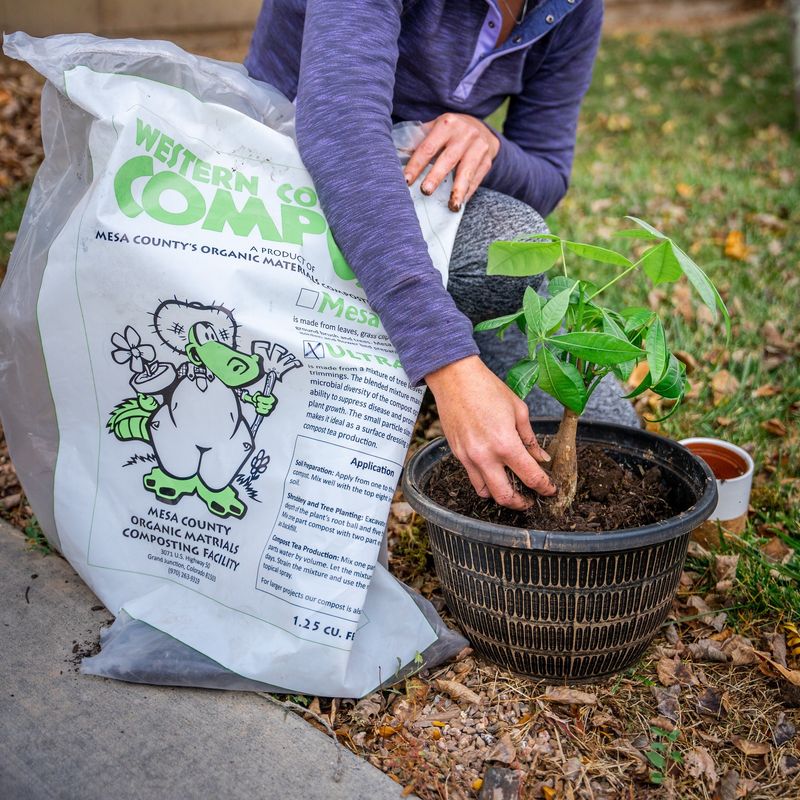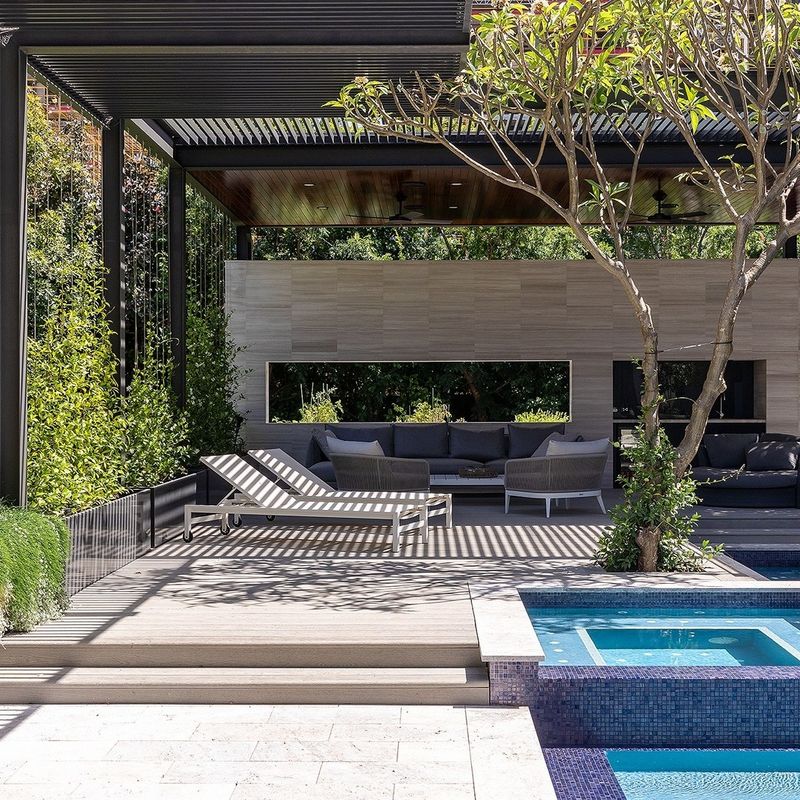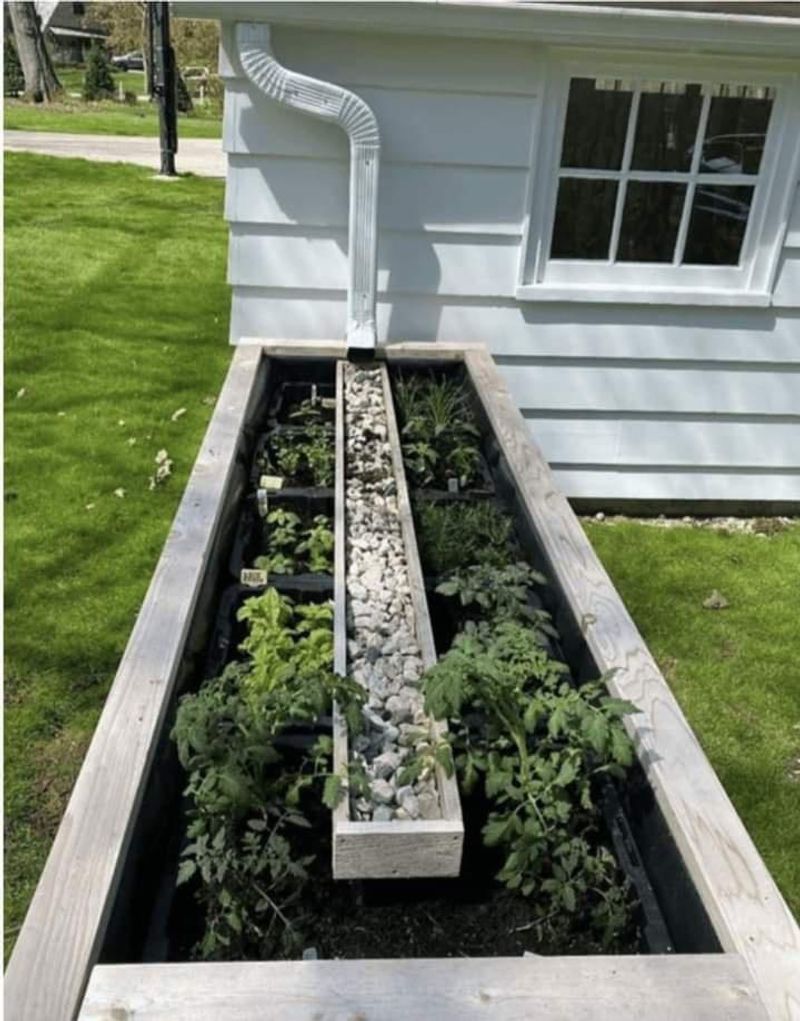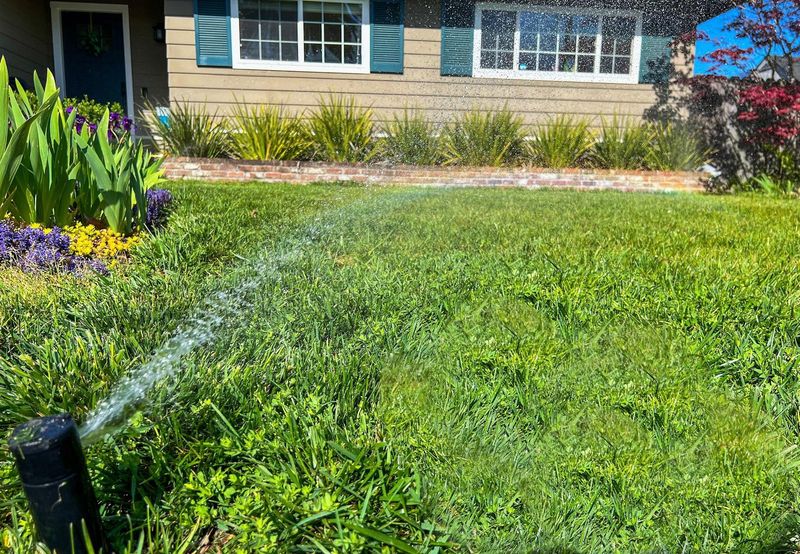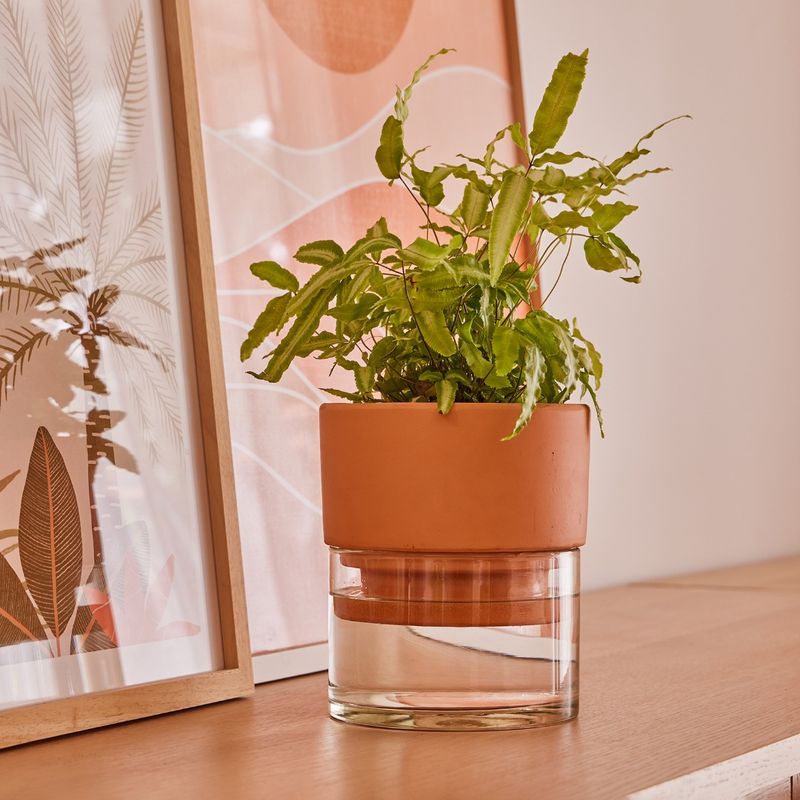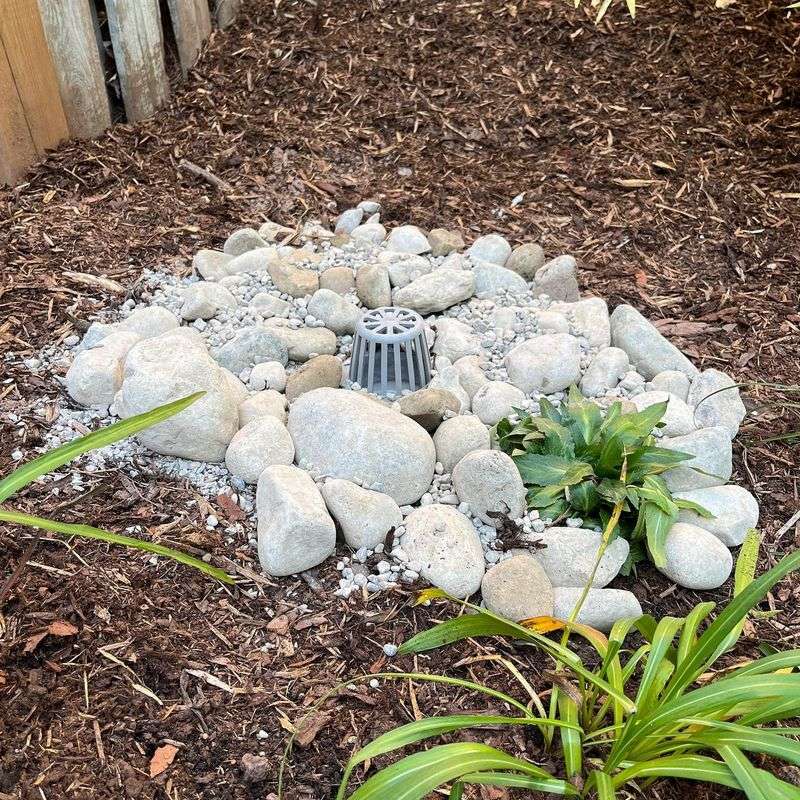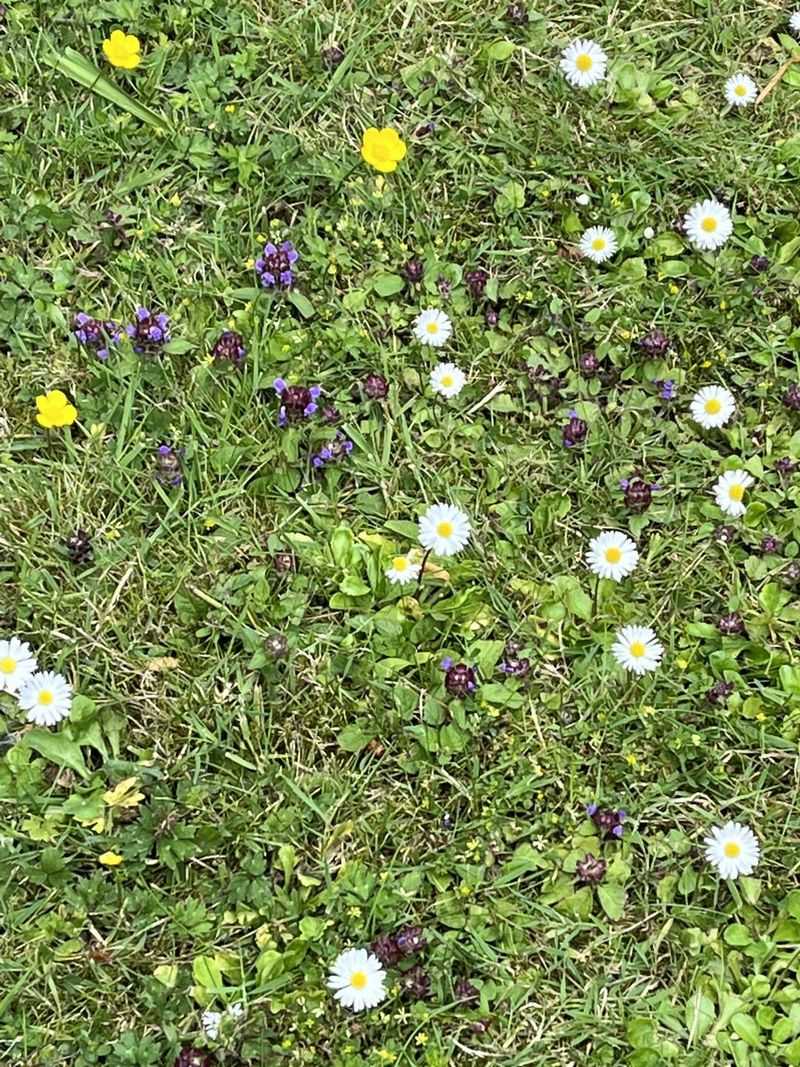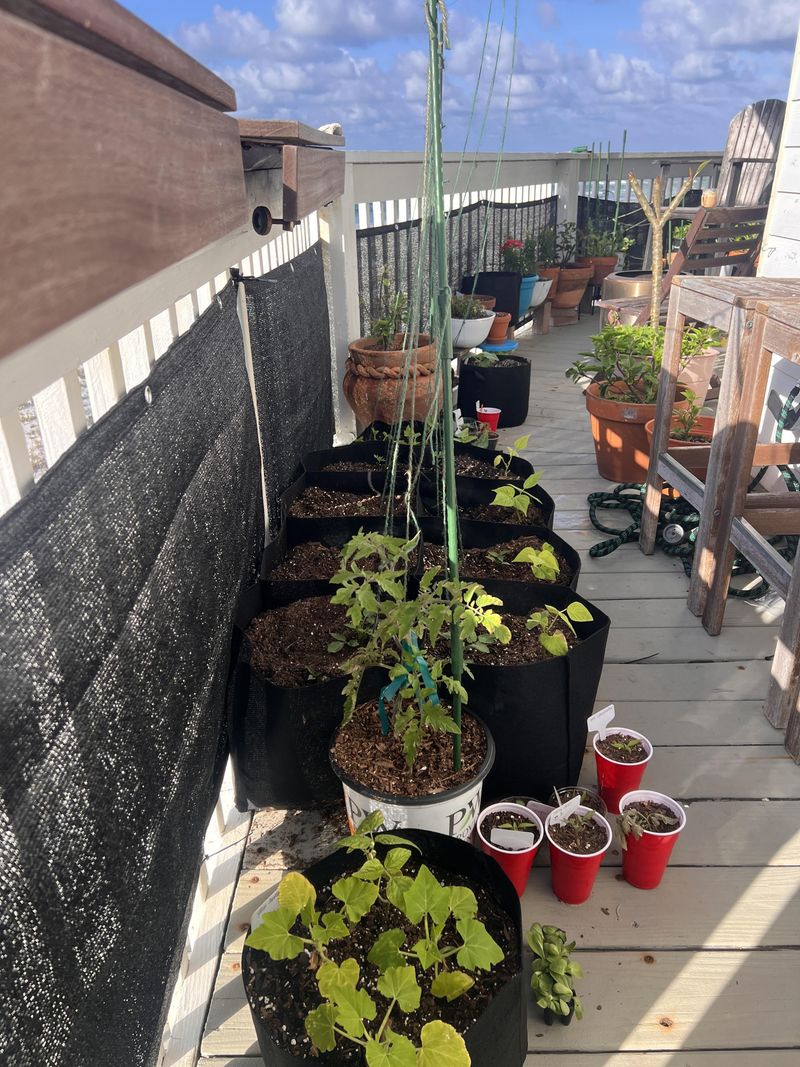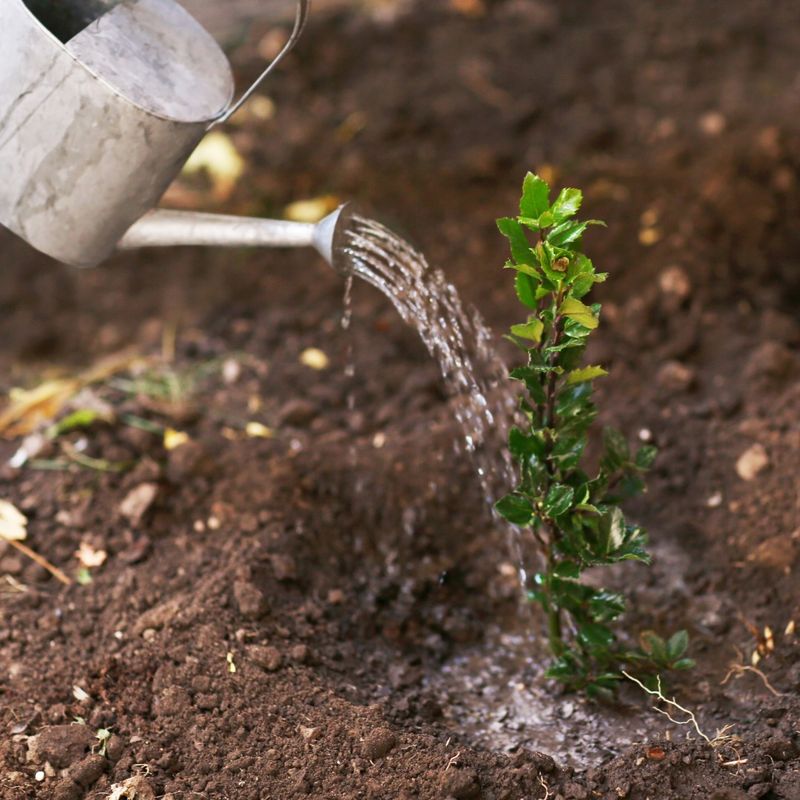Saving water doesn’t mean your garden has to suffer—I promise, it can still look amazing! I’ve picked up a few clever tricks over the years that keep things green without soaking the hose nonstop.
From timing your watering just right to using plants that don’t guzzle like crazy, it all adds up. It’s good for your garden, your wallet, and honestly, it feels great too.
Let’s walk through the simple tips that make a big splash without wasting one.
1. Collect Rainwater
Setting up rain barrels under your downspouts is like having a free water delivery service. One inch of rain on a 1,000-square-foot roof can yield 600 gallons of water! This collected treasure is perfect for your plants.
Rain barrels come in many designs, from basic plastic to decorative ceramic options that blend with your garden aesthetic. Most systems are simple to install and maintain, giving you access to nature’s own irrigation system.
2. Mulch Everything
A 2-3 inch layer of mulch works like a cozy blanket for your soil. It dramatically reduces evaporation, keeping moisture where roots can reach it. Organic options like wood chips, straw, or compost feed your soil as they break down.
Apply mulch when soil is already moist, and keep it a few inches away from plant stems to prevent rot. You’ll not only save water but also reduce weeding time since mulch blocks weed seeds from germinating.
3. Group Plants By Water Needs
Creating hydrozones means placing thirsty plants together and drought-tolerant varieties in their own section. This smart arrangement lets you water efficiently, giving each plant exactly what it needs without wasting a drop.
Map your garden’s natural moisture zones first – areas that stay damp longer or dry out quickly. Then plant accordingly, with water-lovers in naturally moist spots. This approach creates a balanced ecosystem where every plant can thrive with minimal supplemental watering.
4. Install Drip Irrigation
Drip systems deliver water directly to plant roots where it’s needed most. Unlike sprinklers that lose water to evaporation and wind, drip irrigation can be 90% efficient, dramatically cutting water usage while improving plant health.
Modern kits make installation surprisingly easy for DIY gardeners. Many systems can be connected to timers and even smart controllers that adjust watering based on weather forecasts. Your plants get consistent moisture without the waste of traditional watering methods.
5. Water Deeply But Infrequently
Frequent shallow watering creates weak, shallow root systems that can’t handle drought. Instead, give plants a good soaking once or twice weekly, encouraging roots to grow deep where soil stays naturally moist longer.
Early morning is the perfect watering time – plants absorb moisture before the day heats up, and foliage dries quickly, preventing disease. A simple soil moisture meter helps you determine when plants truly need water rather than guessing and potentially overwatering.
6. Choose Native Plants
Native plants have adapted to your local rainfall patterns over thousands of years. They typically need minimal supplemental watering once established, saving you time, money, and precious resources.
Beyond water savings, natives attract local pollinators and create habitat for beneficial insects and birds. They’ve evolved natural defenses against local pests and diseases, requiring fewer interventions. A garden filled with regional natives practically takes care of itself!
7. Add Organic Matter To Soil
Compost acts like a sponge in your soil, holding moisture where roots can access it. Just one pound of organic matter can hold several pounds of water! Regular additions transform even poor soil into water-efficient growing medium.
Mix compost into planting holes and top-dress beds annually with fresh organic matter. Your plants will develop stronger root systems that efficiently seek out water, reducing their dependence on supplemental irrigation. Healthier soil means healthier, more drought-resistant plants.
8. Create Shade Strategically
Temporary shade cloth during intense heat waves can reduce water evaporation by up to 50%. This simple intervention protects sensitive plants when they’re most vulnerable, without affecting their long-term growth patterns.
Consider planting taller crops to shade lower-growing ones naturally. Beans can shade lettuce, while sunflowers provide cooling relief for heat-sensitive vegetables. Even carefully positioned garden furniture or trellises can create beneficial shade pockets that reduce water needs.
9. Capture Household Water
The average home produces gallons of perfectly usable “gray water” daily. Collecting shower warm-up water in buckets or diverting washing machine rinse cycles can supply much of your garden’s needs without touching the hose.
Even kitchen water has uses – water used for rinsing fruits and vegetables or cooking pasta (once cooled) contains nutrients plants love. Just avoid water containing bleach, fabric softener, or grease. This practical recycling connects your home and garden in a sustainable water cycle.
10. Remove Some Lawn Areas
Traditional lawns are incredible water hogs, often consuming 50-70% of residential water use. Replacing portions with water-wise alternatives creates dramatic savings while adding visual interest to your landscape.
Consider groundcovers, native meadow plants, or hardscaping features like decorative gravel with strategic plantings. Many homeowners find that their transformed spaces require less maintenance while providing more enjoyment than their former lawns. Even reducing lawn size by 25% makes a significant difference.
11. Use Self-Watering Containers
Modern self-watering pots feature built-in reservoirs that supply moisture as plants need it. These clever containers reduce watering frequency by up to 75% while preventing both drought stress and overwatering that can damage plants.
The design encourages deep root growth as plants access water from below. Many gardeners find their container plants not only survive but thrive with this consistent moisture supply. For balconies and patios, these pots solve the common problem of containers drying out too quickly.
12. Create Water-Catching Basins
Digging shallow depressions around trees and shrubs creates natural collection points for rainfall and irrigation. These simple basins, sometimes called tree wells or watering rings, direct water exactly where it’s needed instead of letting it run off.
Make them 2-4 inches deep and as wide as the plant’s drip line for maximum effectiveness. Adding mulch inside these basins further reduces evaporation. This ancient technique has helped desert gardeners grow productive plants for centuries with minimal water input.
13. Weed Regularly
Unwanted weeds compete aggressively for every drop of moisture in your soil. Their removal immediately increases water availability for your intentional plants, improving their drought resilience without any additional irrigation.
Develop a habit of pulling weeds when they’re small, before they establish deep roots or set seed. A layer of mulch after weeding helps prevent new weeds while conserving soil moisture. This simple maintenance task has outsized benefits for water conservation.
14. Use Windbreaks
Wind rapidly strips moisture from soil and plant leaves, dramatically increasing water needs. Strategic placement of fences, trellises, or hedges can reduce this effect, creating protected microclimate pockets where plants thrive with less supplemental water.
Even temporary windbreaks during establishment periods help new plantings develop with lower stress. The most effective barriers allow some air movement while breaking the force of prevailing winds. This protection is especially valuable in coastal areas or open landscapes.
15. Apply Water-Retention Crystals
These polymer granules can absorb hundreds of times their weight in water, slowly releasing moisture as soil dries. Just a small amount mixed into planting holes or containers significantly reduces watering frequency while maintaining consistent soil moisture.
They’re particularly effective in hanging baskets and containers that typically dry out quickly. Most crystals last several years before needing replacement. While not a substitute for good watering practices, they provide insurance against missed waterings or extreme heat events.

